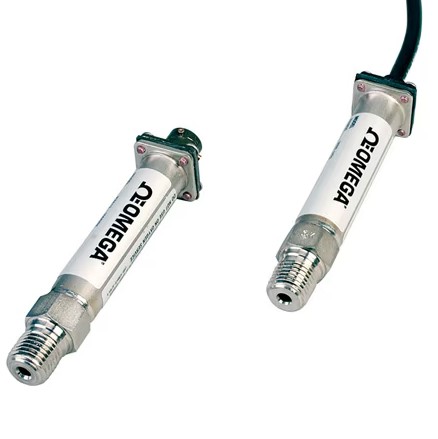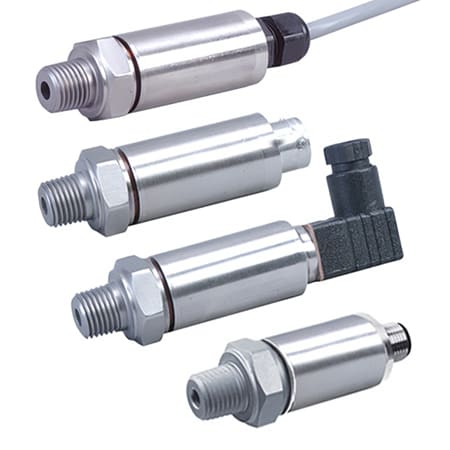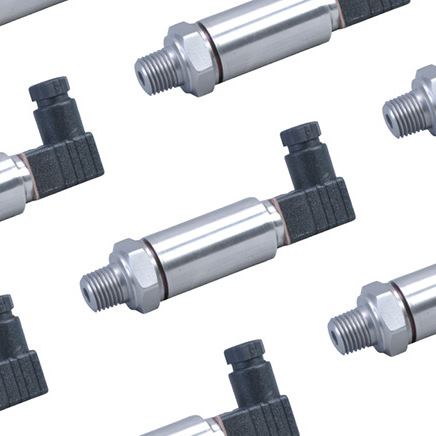Industrial welding processes are often integral to manufacturing, construction, and other industrial operations. However, welding applications are inherently hazardous, involving risks such as gas leaks, overpressure, and inadequate shielding airflow – all of which can compromise safety and weld quality.

To mitigate these risks, vigilant safety management is key. Precise monitoring of pressure and flow parameters are essential in controlling the successful delivery of both shielding gases (gases used in welding to protect the weld area from atmospheric gases such as oxygen, nitrogen, and water vapor) and fuel gases (combustible gases that, when mixed with oxygen and ignited, create a high-temperature flame used for welding) and allowing this control to be executed real time.
Pressure transducers and flow meters serve as vital components of these safety systems. They not only protect personnel and equipment but also help ensure compliance with rigorous standards from OSHA, NFPA, and AWS.
Understanding the Hazards of Industrial Welding
Welding hazards are more than just arc flashes or burns. In many process setups – be it MIG, TIG, or oxy-fuel – shielding gases like argon, CO2, or helium, and flammable gases like acetylene or propane, must be carefully regulated. Common safety risks include:
-
Backpressure or surges damaging regulators or manifolds
Undetected leaks in hoses or fittings, posing combustion or asphyxiation risks
Insufficient gas shielding, which can compromise structural integrity of the weld
Unbalanced gas flow in robotic welding arms or automated systems
Sensors help diagnose these issues before they escalate, acting as a proactive line of defense in high-risk environments.
Pressure Sensors: Detecting Instability and Ensuring System Integrity
In industrial welding environments, pressure sensors are not just for baseline monitoring – they serve as active components in system diagnostics, performance validation, and fail-safe protection. The right pressure instrumentation ensures that gas delivery is not only present, but optimal, traceable, and safe.
Functions of Pressure Sensors in Welding Applications
-
Line Integrity Checks
- Pressure decay tests can indicate leaks in torch lines, regulators, or manifolds – something especially important in hard-to-access areas of automated systems.
- Some systems maintain distinct pressure zones for shielding gases.
- Detecting pressure spikes caused by regulator failures or fast valve closures helps identify and log dangerous anomalies.
Dual-Zone Control
Transient Response Capture
Pressure Sensor Selection Guide
| Selection Factor | Why It Matters in Welding Systems |
|---|---|
| Pressure Range and Accuracy | Ensures that the sensor can properly monitor both supply and delivery pressures within the system’s operating range. High accuracy is critical for detecting leaks or flow disruptions that could impact weld quality. |
| Sensor Type (Gauge, Differential, Absolute) | Choosing the correct type allows for proper measurement depending on the system configuration — whether monitoring line pressure, across filters, or between two points. |
| Output Signal Compatibility | Ensures seamless integration with controllers, PLCs, or data acquisition systems for real-time monitoring and alarms. |
PX Series General Purpose Pressure Transducers with Adjustable Zero & Span
The PX603-PX613-PX605-PX615 Series General Purpose Pressure Transducers with Adjustable Zero & Span are all well-suited for monitoring gas supply systems in industrial welding applications.
-
Broad Pressure Range and Compatibility
- These models are available in gauge, absolute, and vacuum pressure ranges, which is essential when working with a variety of shielding or fuel gases (e.g., argon, CO₂, helium, acetylene).
- Welding gas supply systems often operate at relatively low pressures post-regulation but need to detect both high-pressure supply (pre-regulator) and low-pressure delivery (post-regulator) — these sensors can cover both ranges depending on model selection.
- The adjustable zero and span feature provides field calibration capability, which is especially useful in dynamic environments like welding where system baselines can drift over time due to temperature changes or equipment aging.
- This makes them ideal for long-term reliability and maintenance cycles, reducing the need for frequent sensor replacement.
- These transducers come with a rugged, all-welded stainless steel construction, which resists corrosion and is fully compatible with industrial welding gases — including inert and mildly corrosive gases.
- Designed for harsh environments, they can withstand vibration and temperature fluctuations commonly found near welding operations or in mobile welding rigs.
Adjustable Zero and Span
Durable Design
Flow Meters and Sensors: Guarding Gas Consistency and Welding Quality
Flow meters and sensors in welding are vital tools for ensuring process accuracy, controlling costs, and preventing defects. Inconsistent flow can compromise weld penetration, bead consistency, and oxidation levels, which may result in costly rework or even structural failure.
Functions of Flow Meters and Sensors in Welding Applications
-
Shielding Gas Envelop Verification
- Ensures that MIG or TIG arcs remain protected from ambient contamination, especially important for stainless and reactive alloys.
- Some advanced welding processes use precise gas blends (e.g., Ar/CO₂/O₂). Flow sensors ensure proper ratios across multiple channels.
- In high-volume robotic welding cells, digital mass flow meters provide remote validation of gas flow, reducing the need for manual checks.
Multi-Gas Blending Systems
Remote Calibration and Verification
Flow Sensor Selection Guide
| Selection Factor | Why It Matters in Welding Systems |
|---|---|
| Measurement Type (Thermal Mass, Variable Area, Mass Flow Controller) | Supports accurate monitoring or control of shielding and purge gas flows to maintain weld quality and prevent oxidation or contamination. |
| Flow Range and Accuracy | Proper sizing and accuracy prevent under- or over-delivery of gases, which can lead to poor penetration or excessive gas waste. |
| Control Capabilities (Manual or Automated) | Automated systems allow precise flow adjustments based on process needs, improving repeatability and minimizing operator error. |
FMA-2600A Series Mass Flow Controller
The FMA-2600A Series Mass Flow Controller is an ideal choice for monitoring and controlling gas supply in industrial welding applications.
-
Multi-Gas Capability
- This feature lets users choose from 20 built-in gases, including commonly used welding gases like argon, carbon dioxide, helium, hydrogen, and nitrogen. It eliminates the need for recalibration or swapping devices when switching gas types — a major advantage in multi-process welding environments.
- Welding quality depends heavily on accurate and stable shielding gas flow. These mass flow controllers offer precise regulation of gas flow rates (in ranges from 10 SCCM to 1000 SLPM), helping maintain consistent weld characteristics such as bead formation and penetration.
- The built-in OLED display shows flow rate, total flow, and selected gas, giving weld technicians clear, real-time feedback. This helps with process validation and reduces the risk of gas delivery errors that can compromise weld integrity.
Precision Gas Flow Control
Real-Time Monitoring
Contact a DwyerOmega Expert Today!




